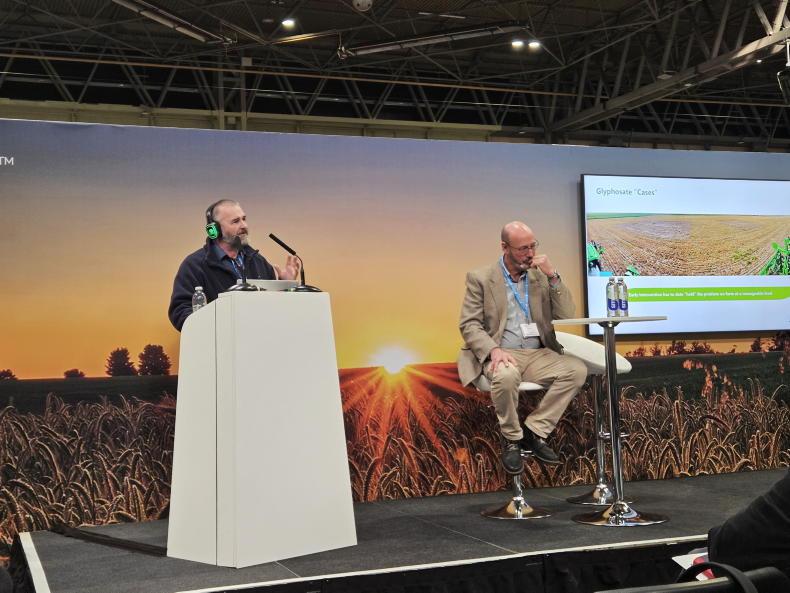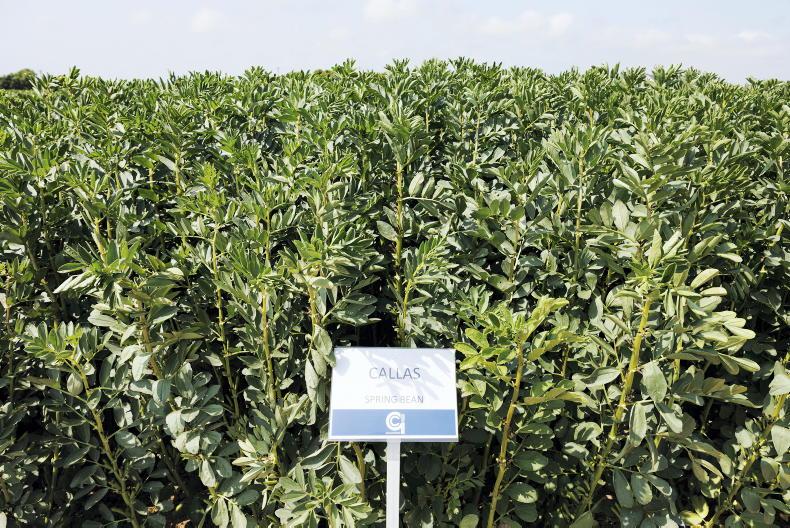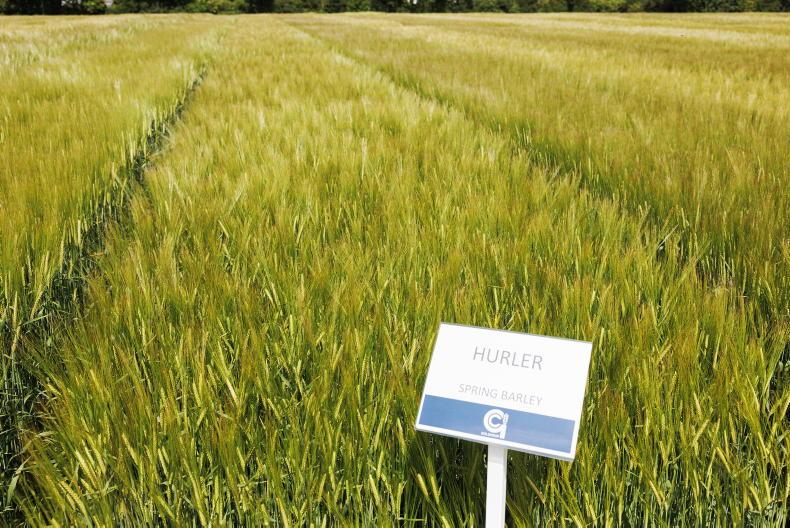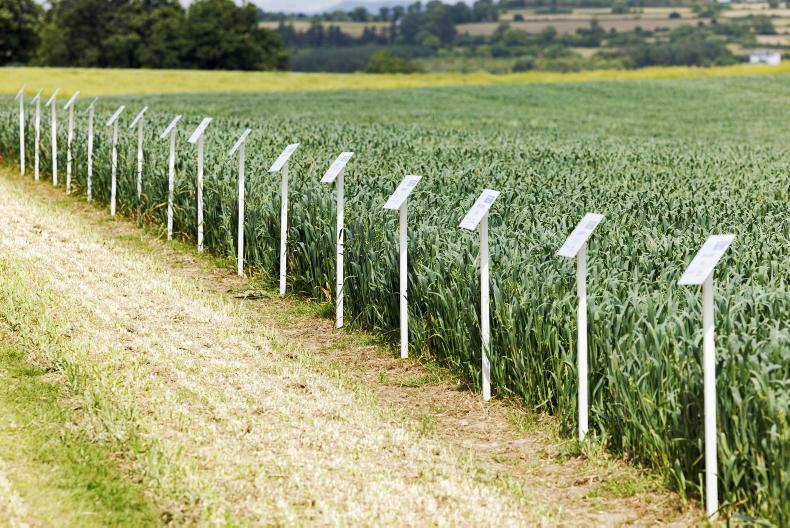The spring cereal area is set to increase dramatically as winter cereal area is back by 30% in many places.
When looking at varieties, consider all characteristics, not just yield. Straw strength is very important as varieties need to be able to stand up and hold on in a difficult harvest.
Having differing dates for ripening is very important where there is a large area of one crop to be cut, or where spring barley and winter wheat may ripen close together.
Of course, good disease resistance makes management a lot easier and more sustainable, with less fungicide use where possible.
There is plenty of choice on the spring barley list this season, with eight varieties in total. Two varieties have been provisionally recommended this year for the first time – Gretchen and Rockway. Geraldine, Skyway and SY Amity have all been fully recommended.
No varieties have exited the list. The Department has stated that data for straw characteristics and disease resistance is limited for both provisionally recommended varieties on the spring barley list.
Gangway (5%)
Gangway has the highest hectolitre weight of all the varieties at 69.4kg/hl. It is one of the control varieties for relative yield and has a score of 98. It has a high score for resistance to straw breakdown with a score of seven. It rates well on resistance to net blotch with a score of eight.
Geraldine (31%)

Geraldine.
Geraldine tops the list on yield, has fairly good straw strength and scores impressively on disease resistance, with a resistance rating of eight for net blotch and seven for Rhynchosporium. It is also in the top half of varieties for hectolitre weight.
RGT Planet (31%)

RGT Planet.
Planet will no doubt remain popular among growers, as it has been consistent for many years. It was first listed in 2017 and comes in at 102 on relative yield.
Grain quality is still matching many other varieties as well. Its disease resistance profile has fallen back slightly.
Skyway (4%)
The top performer on relative yield with a score of 105, Skyway rates well on resistance to Rhynchosporium with a score of seven. It’s a tall variety with a hectolitre weight of 68.1, so it is on the higher end of the scale.
SY Amity (12%)

SY Amity.
SY Amity has the highest thousand grain weight (TGW) on the list at 53.8g and has the lowest screenings on the list at 0.8%. It scores an eight for resistance to net blotch and a seven for resistance to lodging. It’s high on relative yield with a score of 104.
SY Errigal (1%) <1%)
SY Errigal has good straw quality and a very good disease resistance profile, scoring an eight for net blotch and mildew, seven for brown rust and five for Rhynchosporium.
Gretchen (2%)
At a relative yield of 103, Gretchen has very good straw characteristics and excellent disease resistance scores, based on limited data. It has an eight for net blotch and a seven for Rhynchosporium. It has the second highest TGW on the list.
Rockway (5%)
Rockway is another high variety for relative yield at 104. It’s not an early ripener, but rates well on resistance to lodging and straw breakdown. It is one of the top performers on hectolitre weight and has a good disease resistance profile based on limited data.
There is one new variety on the spring wheat list this season – WPB Escape. This variety joins KWS Fixum on the provisionally recommended list, while KWS Helium and WPB Duncan are now fully recommended. It should be noted that the Department has stated that the data on straw characteristics and disease resistance is limited across the spring wheat list.
KWS Helium (13%)
KWS Helium has a relative yield rating of 101 and has the highest hectolitre weight on the list at 79.8kg/hl. It tops the list on TGW at 50.1kg/hl. It also has the highest protein content at 11.8%. KWS Helium is the tallest variety by far on the list as 73.5, but rates similarly on lodging and straw breakdown to other varieties. It rates at five for resistance to Septoria.
WPB Duncan (46%)
WPB Duncan rates 100 for relative yield. It has the best disease resistance profile on the list. It is on the lower end of a close scale for straw strength. At 78.4kg/hl, it should weigh well and grain protein content came in at 11.2%.
KWS Fixum (8%)
KWS Fixum is the highest variety for relative yield on the recommended list. It has a good disease resistance profile. It comes in at 77.2kg/hl and protein content is high at 11.5%.
WPB Escape (33%)
Another high yielder, WPB Escape comes in at 103 for relative yield and rates at a seven for resistance to lodging. WPB Escape falls down on resistance to sprouting with a rating of five, compared to seven in the three other varieties. It is high in protein content at 11.5% and has a hectolitre weight of 78.1kg/hl.
There are just two varieties on the spring oats list this year. Farmers looking for Barra oats will see it is no longer on the list after 33 years. The destined market may determine your oat variety and both varieties are well liked by growers.
Both are the control varieties for yield. Husky is an earlier ripener with a score of eight, compared to WPB Isabel’s six, while WPB Isabel rates best on lodging and straw breakdown. WPB Isabel has the highest TGW and hectolitre weight, while Husky rates highest on kernel content.

WPB Isabel.
Husky takes up 59% of this season’s seed and WPB Isabel accounts for 36% of the seed.
Seed availability
Seed availability is based on planted area in 2022 and is stated in brackets after each variety’s name. It should be noted that there is seed available for other varieties not on the recommended list and this may affect final tallies.
The spring cereal area is set to increase dramatically as winter cereal area is back by 30% in many places.
When looking at varieties, consider all characteristics, not just yield. Straw strength is very important as varieties need to be able to stand up and hold on in a difficult harvest.
Having differing dates for ripening is very important where there is a large area of one crop to be cut, or where spring barley and winter wheat may ripen close together.
Of course, good disease resistance makes management a lot easier and more sustainable, with less fungicide use where possible.
There is plenty of choice on the spring barley list this season, with eight varieties in total. Two varieties have been provisionally recommended this year for the first time – Gretchen and Rockway. Geraldine, Skyway and SY Amity have all been fully recommended.
No varieties have exited the list. The Department has stated that data for straw characteristics and disease resistance is limited for both provisionally recommended varieties on the spring barley list.
Gangway (5%)
Gangway has the highest hectolitre weight of all the varieties at 69.4kg/hl. It is one of the control varieties for relative yield and has a score of 98. It has a high score for resistance to straw breakdown with a score of seven. It rates well on resistance to net blotch with a score of eight.
Geraldine (31%)

Geraldine.
Geraldine tops the list on yield, has fairly good straw strength and scores impressively on disease resistance, with a resistance rating of eight for net blotch and seven for Rhynchosporium. It is also in the top half of varieties for hectolitre weight.
RGT Planet (31%)

RGT Planet.
Planet will no doubt remain popular among growers, as it has been consistent for many years. It was first listed in 2017 and comes in at 102 on relative yield.
Grain quality is still matching many other varieties as well. Its disease resistance profile has fallen back slightly.
Skyway (4%)
The top performer on relative yield with a score of 105, Skyway rates well on resistance to Rhynchosporium with a score of seven. It’s a tall variety with a hectolitre weight of 68.1, so it is on the higher end of the scale.
SY Amity (12%)

SY Amity.
SY Amity has the highest thousand grain weight (TGW) on the list at 53.8g and has the lowest screenings on the list at 0.8%. It scores an eight for resistance to net blotch and a seven for resistance to lodging. It’s high on relative yield with a score of 104.
SY Errigal (1%) <1%)
SY Errigal has good straw quality and a very good disease resistance profile, scoring an eight for net blotch and mildew, seven for brown rust and five for Rhynchosporium.
Gretchen (2%)
At a relative yield of 103, Gretchen has very good straw characteristics and excellent disease resistance scores, based on limited data. It has an eight for net blotch and a seven for Rhynchosporium. It has the second highest TGW on the list.
Rockway (5%)
Rockway is another high variety for relative yield at 104. It’s not an early ripener, but rates well on resistance to lodging and straw breakdown. It is one of the top performers on hectolitre weight and has a good disease resistance profile based on limited data.
There is one new variety on the spring wheat list this season – WPB Escape. This variety joins KWS Fixum on the provisionally recommended list, while KWS Helium and WPB Duncan are now fully recommended. It should be noted that the Department has stated that the data on straw characteristics and disease resistance is limited across the spring wheat list.
KWS Helium (13%)
KWS Helium has a relative yield rating of 101 and has the highest hectolitre weight on the list at 79.8kg/hl. It tops the list on TGW at 50.1kg/hl. It also has the highest protein content at 11.8%. KWS Helium is the tallest variety by far on the list as 73.5, but rates similarly on lodging and straw breakdown to other varieties. It rates at five for resistance to Septoria.
WPB Duncan (46%)
WPB Duncan rates 100 for relative yield. It has the best disease resistance profile on the list. It is on the lower end of a close scale for straw strength. At 78.4kg/hl, it should weigh well and grain protein content came in at 11.2%.
KWS Fixum (8%)
KWS Fixum is the highest variety for relative yield on the recommended list. It has a good disease resistance profile. It comes in at 77.2kg/hl and protein content is high at 11.5%.
WPB Escape (33%)
Another high yielder, WPB Escape comes in at 103 for relative yield and rates at a seven for resistance to lodging. WPB Escape falls down on resistance to sprouting with a rating of five, compared to seven in the three other varieties. It is high in protein content at 11.5% and has a hectolitre weight of 78.1kg/hl.
There are just two varieties on the spring oats list this year. Farmers looking for Barra oats will see it is no longer on the list after 33 years. The destined market may determine your oat variety and both varieties are well liked by growers.
Both are the control varieties for yield. Husky is an earlier ripener with a score of eight, compared to WPB Isabel’s six, while WPB Isabel rates best on lodging and straw breakdown. WPB Isabel has the highest TGW and hectolitre weight, while Husky rates highest on kernel content.

WPB Isabel.
Husky takes up 59% of this season’s seed and WPB Isabel accounts for 36% of the seed.
Seed availability
Seed availability is based on planted area in 2022 and is stated in brackets after each variety’s name. It should be noted that there is seed available for other varieties not on the recommended list and this may affect final tallies.













SHARING OPTIONS